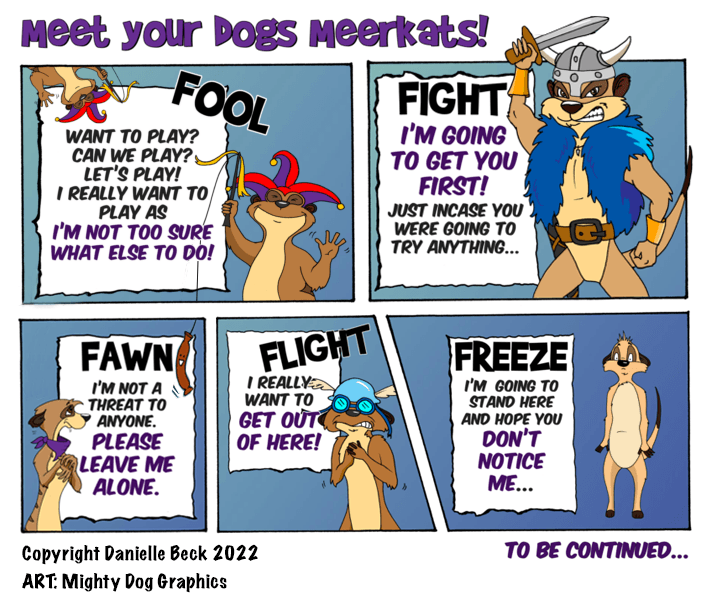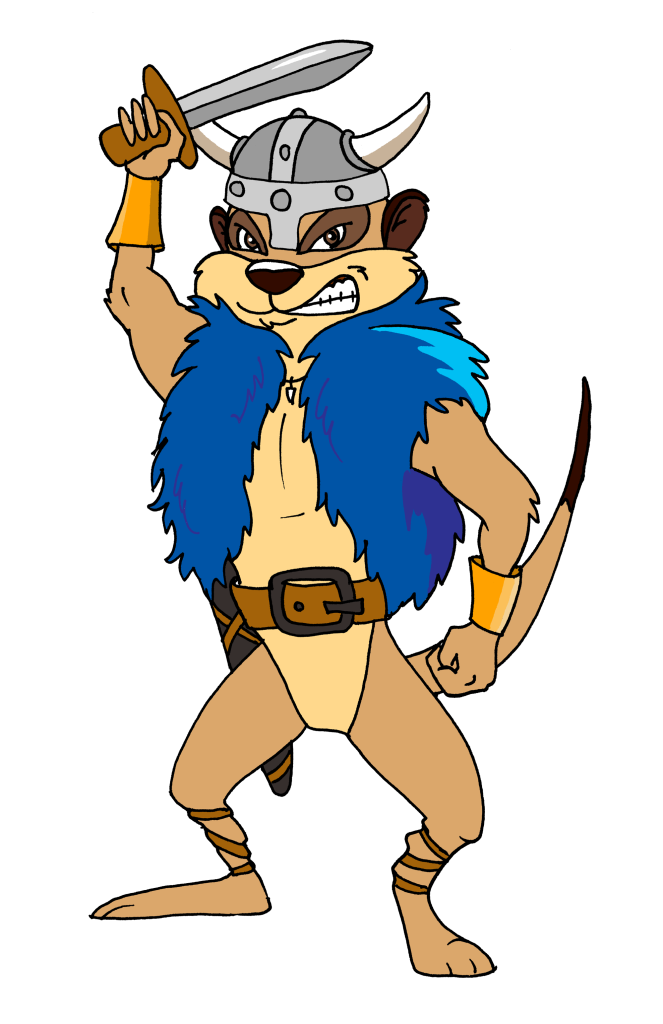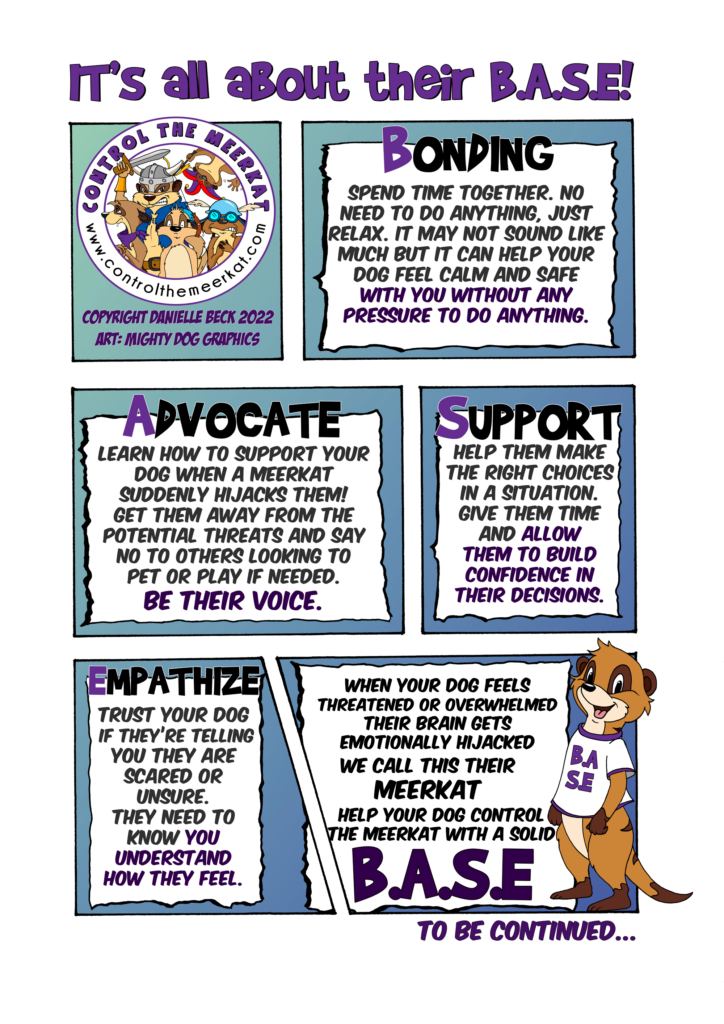

Fight
For most species this is a last resort, as it’s very costly, but if all else fails you may be left with no choice. For many dogs with fight, they charge first and ask questions later. The best defence is a good offence. Many appear confident and some are, as this technique has often been tired and tested. These dogs are not nasty and many have a false sense of confidence and bravado. Shouting at everything is a reliable way to keep threats at bay.

Flight
Avoid the threat, run away and seek support or safety or hide. These dogs will try to move away, often bolting with their ears back and tight against their head, tail tucked, and panting heavily with large eyes. If they can’t run, as they’re on a lead or cornered they get scared and frustrated and will start to display more fight type behaviours, as they try to intimidate the threat. These dogs are often better off lead and will choose to avoid situation.

Freeze
These dogs are too scared to move so they freeze, hoping the threat may see they’re no threat and leave. This response can be misinterpreted as calm and ok. However, their body will be very stiff, you may see lots of nose licks, small lip curls and low vibrating growls. These dogs are not 'fine' or 'calm' they are shutting down and withdrawing. They are often highly tolerant but will react if pushed, which appears to come 'out of the blue'.

Fool
Dogs that fool are goofy by nature and often unaware if a threat is 'real'. They're often confident in situations they know and 'play up' in others. They will try to avoid conflict through play and distractions, which generally gets them into trouble. They may appear over excitable, or over friendly. They often zoom and start interacting with their environment in a fast way with little thought behind their actions. They are often seen as 'thick' or 'stubborn' when they're actually overwhelmed.

Fawn
These dogs try to calm situations to avoid threat and conflict. Often the play police in group situations, they are often seen being over the top wiggly, often with their bellies close to the floor or rolling onto their back. They will lick their nose / mouth, to appease the ‘threat’ to try to calm them and avoid punishment. They are seen as very biddable and compliant when often they're unsure and have a high need to 'people please' to avoid conflict.
The ‘Meerkat’ is an analogy developed by Clinical Animal Behaviourist Danielle Beck, MSc, to help caregivers to understand how their dogs brain affects their behaviour. Often our dogs react so quickly we don’t know what to do! They loose control, they’re like a different dog, and the treats just dont work. This emotional highjacking we refer to as ‘The Meerkat’ and we can show you how to help your dog to ‘Control The Meerkat’ so you can support them and make your life easier.
All dogs have a meerkat hanging out on their collar, which is able to hijack them and take over whenever they feel threatened or overwhelmed. Despite this some dogs seem to have active meerkats and other calm ones, but why? This depends entirely on your dog, their personality, genetics, development and breeding history, socialisation, their environment, learning history, health, any trauma they may have faced, and many more factors.
Each Meerkat is based off the fight/flight responses available to your dog when they feel threatened, conflicted or overwhelmed. For many dogs when they are in a situation in which they feel is threatening their brain literally changes and they get hijacked by their emotional brain – their Meerkat. Each dog will have access to all Meerkats. However, there is often a primary meerkat that will be the main Meerkat for your dog. Understanding which Meerkat primarily hijacks your dog can really help boost your rehabilitation, support them more effectively, and predict their behaviour.
We want to take the pressure off your dog when training, as we can’t train our dogs until we can control their Meerkat, and often we can’t do that through conventional training. That’s where we’re different! We can help you to teach your dog how to ‘Control The Meerkat’ and help themselves with our B.A.S.E Course and take the pressure off you !
Dogs Impacted By Trauma
Having a threat response system activated can result in trauma and a form of post traumatic stress. For many dogs, they can just shake it off as unpleasant and continue their day. Others it may result in a short term context anxiety and they bounce back. However, just like people, there are other who are more deeply affected by this, especially if they have been repeatedly exposed to threats (from their perspective). These dogs may develop trauma responses in situation that aren’t threatening, as their ‘Meerkat’ is in overdrive. They dont believe that they are safe and everything is a potential threat to them. These dogs can’t be helped with training alone, they need a sense of safety, trust and connection first.

